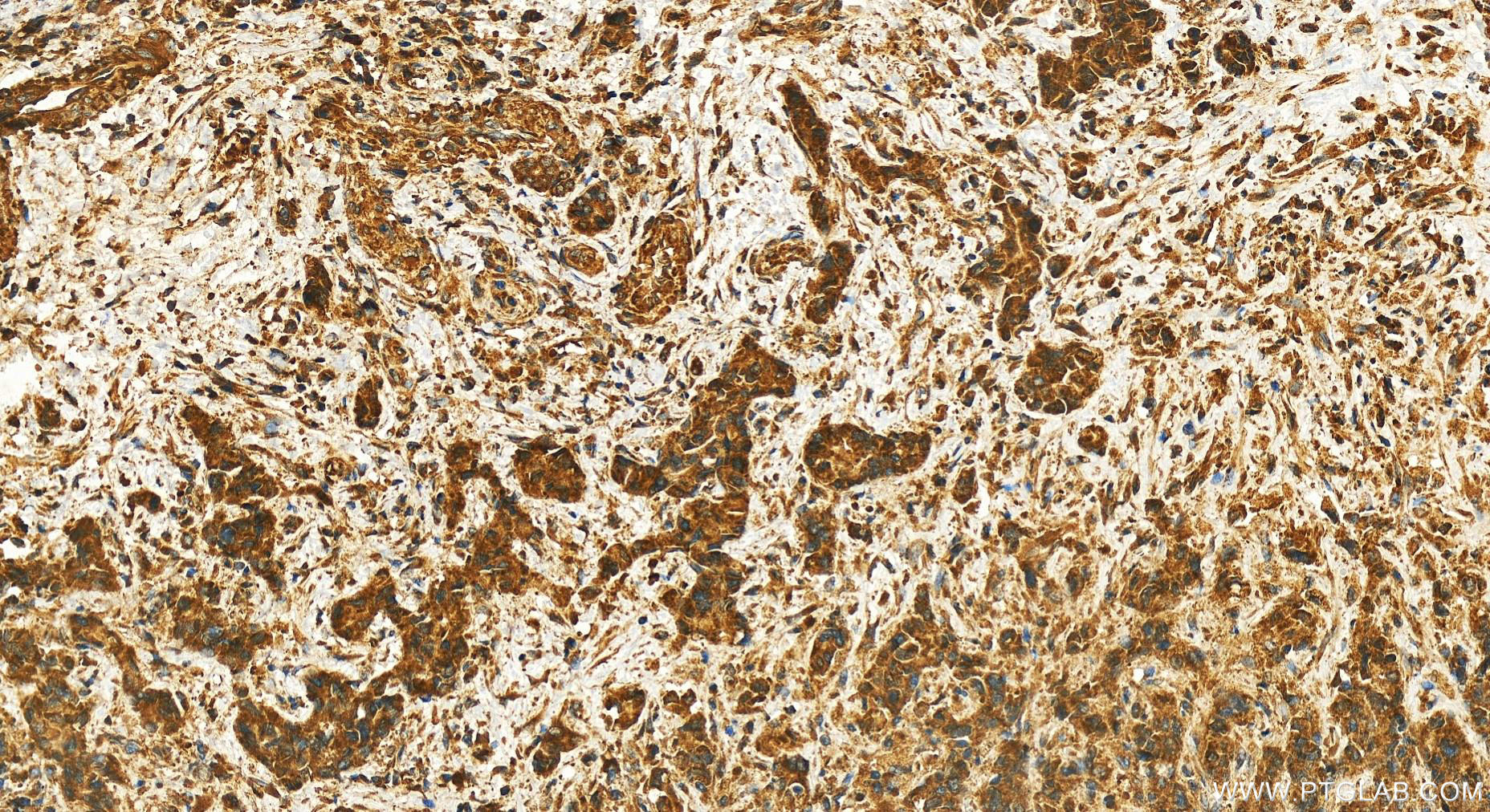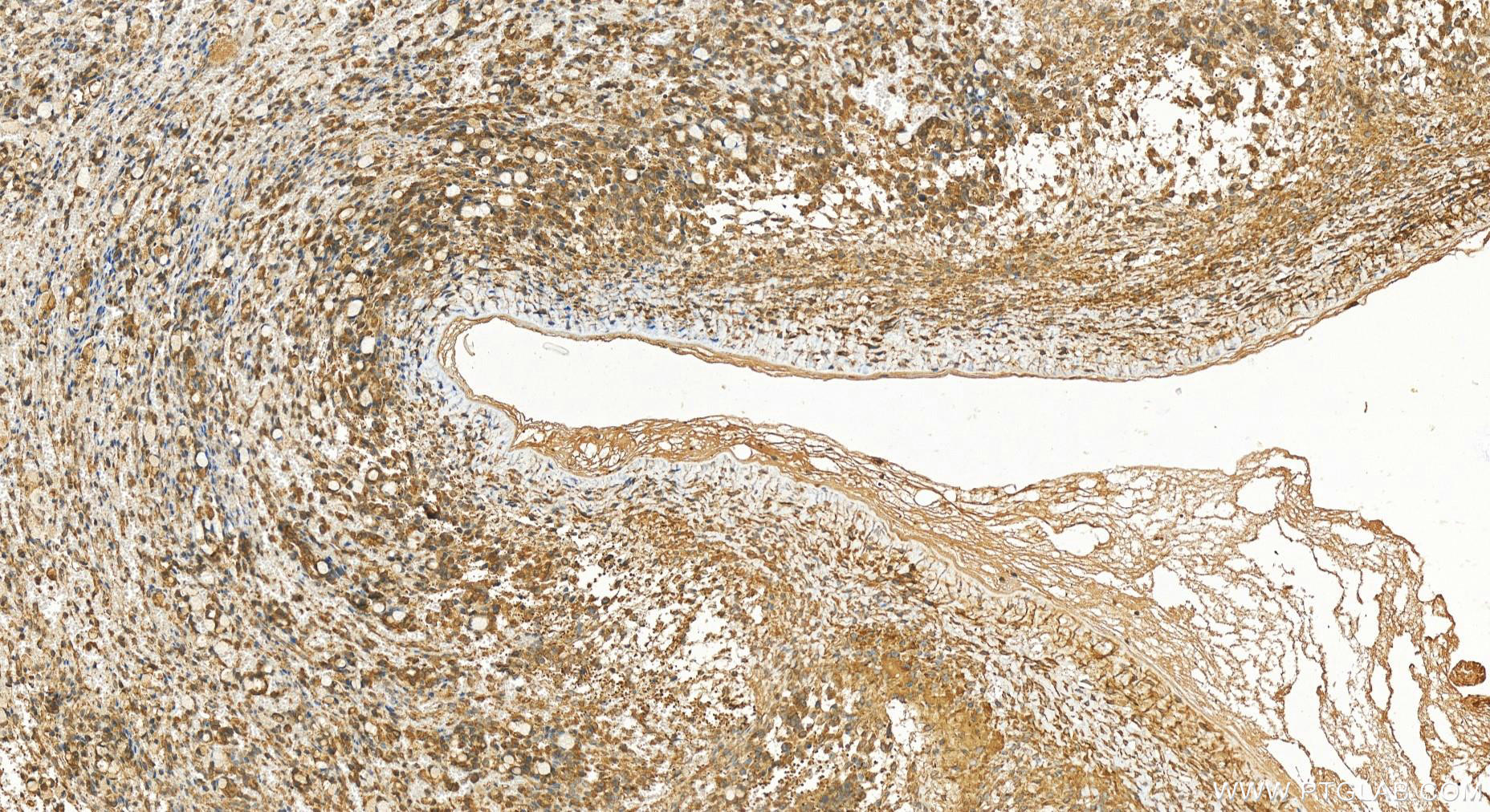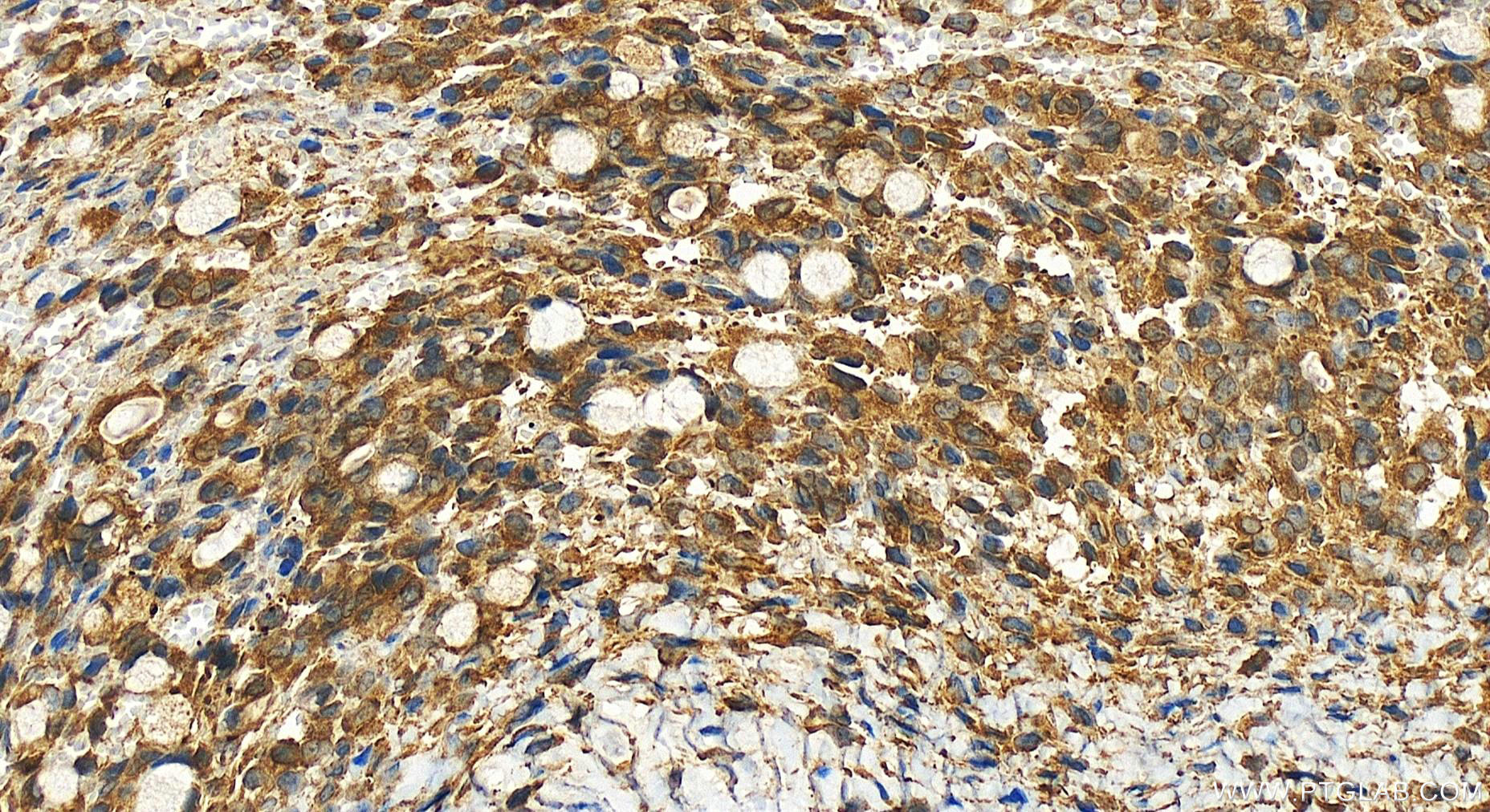- Featured Product
- KD/KO Validated
LPCAT4 Polyklonaler Antikörper
LPCAT4 Polyklonal Antikörper für WB, IHC, ELISA
Wirt / Isotyp
Kaninchen / IgG
Getestete Reaktivität
human, Maus, Ratte
Anwendung
WB, IHC, ELISA
Konjugation
Unkonjugiert
Kat-Nr. : 17905-1-AP
Synonyme
Geprüfte Anwendungen
| Erfolgreiche Detektion in WB | HT-29-Zellen, HeLa-Zellen, HepG2-Zellen, Maushirngewebe, Rattenhirngewebe |
| Erfolgreiche Detektion in IHC | human intrahepatic cholangiocarcinoma tissue, human ovary cancer tissue Hinweis: Antigendemaskierung mit TE-Puffer pH 9,0 empfohlen. (*) Wahlweise kann die Antigendemaskierung auch mit Citratpuffer pH 6,0 erfolgen. |
Empfohlene Verdünnung
| Anwendung | Verdünnung |
|---|---|
| Western Blot (WB) | WB : 1:1000-1:4000 |
| Immunhistochemie (IHC) | IHC : 1:50-1:500 |
| It is recommended that this reagent should be titrated in each testing system to obtain optimal results. | |
| Sample-dependent, check data in validation data gallery | |
Veröffentlichte Anwendungen
| WB | See 6 publications below |
Produktinformation
17905-1-AP bindet in WB, IHC, ELISA LPCAT4 und zeigt Reaktivität mit human, Maus, Ratten
| Getestete Reaktivität | human, Maus, Ratte |
| In Publikationen genannte Reaktivität | human, Maus |
| Wirt / Isotyp | Kaninchen / IgG |
| Klonalität | Polyklonal |
| Typ | Antikörper |
| Immunogen | LPCAT4 fusion protein Ag12281 |
| Vollständiger Name | lysophosphatidylcholine acyltransferase 4 |
| Berechnetes Molekulargewicht | 524 aa, 57 kDa |
| Beobachtetes Molekulargewicht | 50-57 kDa |
| GenBank-Zugangsnummer | BC092463 |
| Gene symbol | LPCAT4 |
| Gene ID (NCBI) | 254531 |
| Konjugation | Unkonjugiert |
| Form | Liquid |
| Reinigungsmethode | Antigen-Affinitätsreinigung |
| Lagerungspuffer | PBS with 0.02% sodium azide and 50% glycerol |
| Lagerungsbedingungen | Bei -20°C lagern. Nach dem Versand ein Jahr lang stabil Aliquotieren ist bei -20oC Lagerung nicht notwendig. 20ul Größen enthalten 0,1% BSA. |
Hintergrundinformationen
LPCAT4, also known as lysophosphatidylcholine acyltransferase 4, is an enzyme that plays a crucial role in lipid metabolism and membrane remodeling It is a member of the 1-acylglycerol-3-phosphate O-acyltransferase (EC 2.3.1.51) family and is involved in the conversion of lysophosphatidic acid (LPA) to phosphatidic acid (PA), a precursor in the biosynthesis of all glycerolipids. Both LPA and PA are involved in signal transduction. The protein is predicted to be located in the membrane and is classified as a metabolic protein and enzyme. It is involved in biological processes such as lipid biosynthesis, lipid metabolism, phospholipid biosynthesis, and phospholipid metabolism. .
Protokolle
| PRODUKTSPEZIFISCHE PROTOKOLLE | |
|---|---|
| WB protocol for LPCAT4 antibody 17905-1-AP | Protokoll herunterladen |
| IHC protocol for LPCAT4 antibody 17905-1-AP | Protokoll herunterladenl |
| STANDARD-PROTOKOLLE | |
|---|---|
| Klicken Sie hier, um unsere Standardprotokolle anzuzeigen |
Publikationen
| Species | Application | Title |
|---|---|---|
J Hepatol Lysophosphatidylcholine acyltransferase 1 altered phospholipid composition and regulated hepatoma progression. | ||
Free Radic Biol Med Role of ferroptosis mediated by abnormal membrane structure in DEHP-induced reproductive injury | ||
Neurochem Res iPLA2β Knockout Mouse, a Genetic Model for Progressive Human Motor Disorders, Develops Age-Related Neuropathology. | ||
FASEB J Deep multilayer brain omics identifies the potential involvement of menopause molecular networks in Gliomas' disease progression | ||
Front Biosci (Landmark Ed) Upregulation of LPGAT1 Enhances Lung Adenocarcinoma Proliferation | ||
FASEB J Overexpression of lysophospholipid acyltransferase, LPLAT10/LPCAT4/LPEAT2, in the mouse liver increases glucose-stimulated insulin secretion |







